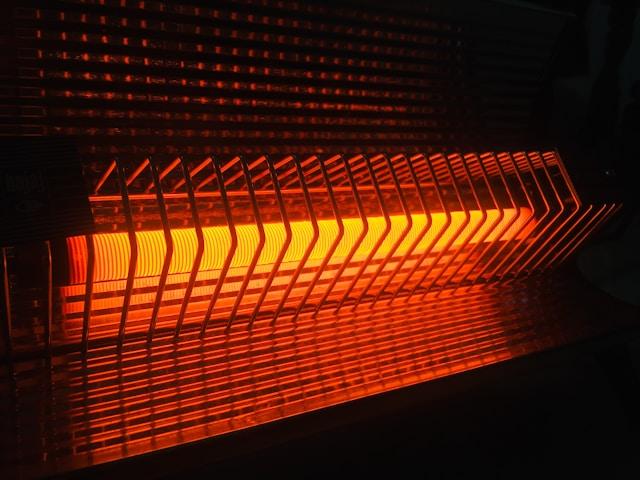The pipes are noisy, one room feels like a sauna, and in the other you have to sleep in a sweater? If your heating is working "as it comes," it's time for professional installation of heating systems. The good news: a properly sized system returns control — even heat, lower costs, and peace of mind throughout the season. Here we briefly summarize what the service includes, what the budget depends on, and how to choose a specialist without guessing.

What does "heating installations" actually mean?
“Heating installations” include all solutions for heating at home: installation of radiators, underfloor heating installation, boilers (gas/wood pellets/electric), air-water heat pumps, buffer tanks, water heaters (including combined), circulation pumps, mixing valves, controls, and protections. The specialist's task is to calculate the heat losses, size each component, and adjust the system to operate quietly, evenly, and efficiently.
Why sizing is critical
Too small a radiator or an undersized heat pump = cold and overheating of the bills; too large a boiler = frequent on/off cycles and lower efficiency. That's why a good technician starts with data: area, insulation, windows, desired temperatures for each room.

How the installation proceeds — simply and in order
1. Inspection and data — dimensions, insulation, number of rooms, available routes.
2. Proposal — selection of the source (boiler/heat pump), type of distribution (radiators/floor), schemes and materials.
3. Installation — piping, collectors, installation of radiators or underfloor heating, fittings, automatic air vents.
4. Start and balance — pressure, flow rates, room settings (thermostatic heads/thermostats).
5. Instruction and warranty — what to monitor and when to perform maintenance.
Tip: if you are ordering a service through the platform for the first time, check out the handy guide How to order a service on Ofertirai.me? — will save you time when describing the task.
Radiators or underfloor? Or maybe a hybrid
• Radiators — quick response, easy modernization; ideal for upgrading an apartment.
• Underfloor heating installation — low supply temperature, comfort, and savings; suitable for larger renovations.
• Hybrid — heat pump with underfloor heating in the living room and radiator installation in the bedrooms.
The key is balance: correct flow rates, thermostat control, and hydraulic balancing. When everything is "in norm," the heat is felt evenly, and the bills go down.

What does the budget depend on
• Scope: installation of radiators only vs. a complete system with a boiler and air-water heat pump.
• Materials: pipes (PEX/copper), collectors, fittings, automation.
• Heat source: boiler (gas/pellets/electric) or heat pump, buffer, chimney/ventilation.
• Insulation and losses: with poor insulation, the system is sized differently.
• Access and floor: laying of routes, noise protection, neighboring properties.
Helpful: for a quality order with fewer "surprises," the approach "questions first, then the offer" works — see Why the services in Ofertirai.me do they start with a question, rather than a fixed offer?.
Useful reading: when the specification makes the difference — Guide: How to Choose a Specialist for Construction Work.
Most Common Mistakes (and How to Avoid Them)
• "Copy-paste" from the neighbor. Two equal areas ≠ equal losses. Own calculations are needed.
• No hydraulic balance. Result: the first room overheats, the last one is cold.
• Inappropriate source. A boiler without modulation in a small apartment or an air-to-water heat pump without a buffer during frequent starts = low efficiency.
• Lack of venting/filtration. Noise and faster wear.
• There is no maintenance plan. One fall without maintenance = winter with "surprises".
How to Compare Offers Fairly
Request a breakdown: type of source (boiler/heat pump), scheme (radiators/floor heating), materials (brand/model), automation (thermostats, zone control), balancing, startup, and warranty. Ask about alternatives (e.g., floor heating installation in the living room + low-temperature radiators in the bedrooms) and the expected cost at -5°C / +5°C.
Finally, request photos of completed projects and recommendations — real projects speak the loudest.
Mini-FAQ
How long does it take?
Replacement of radiators in an apartment: 1 day; complete system with underfloor heating: 2–5 days depending on the area; air-water heat pump with buffer: usually 1–2 days after preparation.
Do I need to buy materials in advance?
Better not — the team carries compatible parts and provides a guarantee for complete execution.
Can I combine old radiators with a new source?
Yes, but it is important to check the volumes/power and to make a balance; often there is a point in new thermostatic heads and flushing.
Conclusion:
The installation of heating systems is not just about "connecting pipes" — it is a system that works for you every day for the years to come. With the right design, accurate materials, and an experienced team, you receive even heat and predictable bills. And when the description is clear and the offers are comparable, the result is heat without surprises.